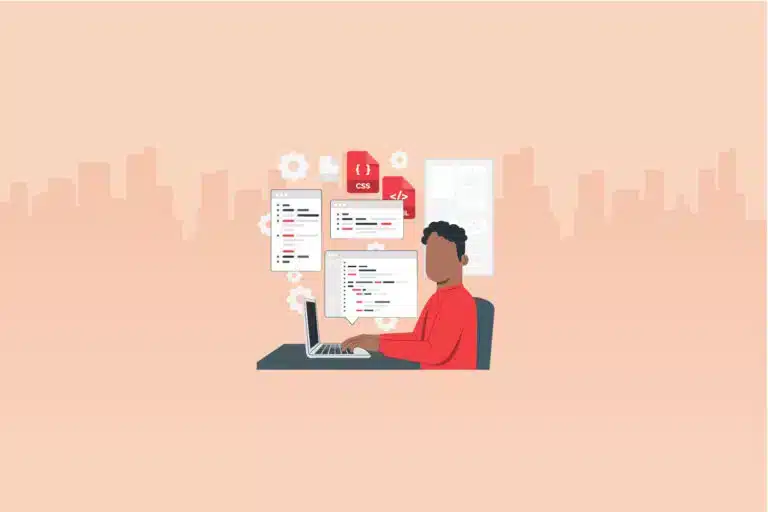In today’s fast-paced world, achieving and maintaining a healthy work-life balance has become a paramount concern for individuals and organizations alike. The constant juggling act between professional responsibilities and personal life can often leave us feeling overwhelmed and stretched to our limits. This struggle is why it’s essential to understand how to measure work-life balance effectively.
Work-life balance is not a one-size-fits-all concept; it’s a dynamic equilibrium that varies from person to person. Moreover, as the world of work continues to evolve, the definition of balance has shifted. The lines between work and personal life have blurred, making it even more critical to assess and adjust our work-life balance regularly.
In this blog, we will delve into the intricacies of work-life balance, exploring the various methods and strategies to measure and improve it. From quantitative approaches to qualitative assessments, we will provide you with a comprehensive toolkit to gauge your own work-life balance and make meaningful adjustments. Whether you’re an individual striving for personal harmony or an HR professional looking to support your team, this guide will equip you with the knowledge and tools needed to thrive in both your professional and personal spheres.
Understanding the concept of work-life balance
Work-life balance is a multifaceted concept that plays a pivotal role in our overall well-being and daily lives. It refers to the equilibrium between our professional commitments and personal pursuits, encompassing various aspects such as career, family, health, and leisure. Achieving a harmonious work-life balance is not a one-size-fits-all endeavor; it is highly individualized and varies from person to person.
In essence, work-life balance revolves around the ability to allocate time and energy to work-related responsibilities while also nurturing personal relationships, pursuing hobbies, and maintaining physical and mental health. It’s about striking the right proportion that allows individuals to excel in their careers without sacrificing their quality of life.
One crucial aspect of work-life balance is recognizing that it’s a dynamic concept that evolves throughout our lives. What constitutes balance for a recent college graduate entering the workforce may differ significantly from that of a mid-career professional with a family. As our priorities and circumstances change, so too does our perception of balance. It’s a continuous journey of self-discovery and adaptation.
Additionally, work-life balance extends beyond merely dividing time between work and personal life. It encompasses emotional well-being, stress management, and the ability to set boundaries effectively. It’s not about clocking in and out but rather about finding fulfillment in both spheres.
As we delve deeper into this topic, we will explore various methods and strategies to measure and improve work-life balance, taking into account both quantitative and qualitative approaches. By the end of this exploration, you will have a comprehensive understanding of how to achieve a balanced life that aligns with your unique goals and values.
Key indicators to measure work-life balance
Measuring work-life balance effectively requires a nuanced understanding of the various indicators that contribute to this delicate equilibrium. While it’s tempting to think of work-life balance solely in terms of the hours spent at work versus leisure, this oversimplification neglects the complexity of the issue. Instead, we must consider a range of key indicators that collectively paint a more accurate picture of our work-life balance.
One primary indicator is time allocation. This involves examining how we divide our time between work-related tasks, personal life, and self-care. Are we spending an excessive amount of time at the office, neglecting family and friends, or sacrificing sleep and relaxation? Evaluating how our time is distributed can offer valuable insights into the state of our work-life balance.
Another critical aspect is emotional well-being. Our emotional state can be a powerful indicator of whether our work and personal lives are in harmony. Feelings of stress, burnout, or constant anxiety can signal an imbalance. Conversely, a sense of fulfillment, contentment, and enthusiasm can indicate a healthier balance.
Physical health is equally vital. Neglecting one’s health due to work-related demands can have long-term consequences. Frequent illnesses, fatigue, or unhealthy lifestyle choices may be signs that work is encroaching too much on personal well-being.
Furthermore, assessing the quality of relationships, both at work and in our personal lives, is crucial. Healthy connections with colleagues, friends, and family contribute significantly to our overall satisfaction and work-life balance.
As we explore these key indicators in more detail, it becomes clear that work-life balance is a multidimensional concept. By examining these indicators holistically, we can gain a deeper understanding of our individual balance and take proactive steps to improve it.
Evaluating your work-life balance
One of the fundamental steps in improving work-life balance is engaging in a self-assessment. This introspective process involves taking a closer look at your daily life, priorities, and how you allocate your time and energy. By conducting a work-life balance self-assessment, you can gain valuable insights into areas that may require adjustment and develop a personalized plan for achieving a more harmonious balance.
Self-assessment begins with reflection. Consider your current workload, personal commitments, and overall sense of well-being. Are you feeling overwhelmed by work-related stress? Are you sacrificing time with loved ones for the sake of your career? These are essential questions to ponder during this process.
A helpful tool for self-assessment is keeping a journal. Document your daily activities and emotions over a specific period, whether it’s a week or a month. This journal can reveal patterns and trends in your behavior and emotions, helping you pinpoint areas where work-life balance may be lacking.
Additionally, consider your long-term goals and values. What are your priorities in life? Do they align with how you currently allocate your time? Sometimes, aligning your daily actions with your overarching values is a significant step towards achieving a better balance.
Moreover, seek input from trusted friends, family members, or colleagues. They can provide an external perspective on your work-life balance and offer valuable insights.
Remember that self-assessment is an ongoing process. As circumstances change and your priorities evolve, revisiting your self-assessment periodically is crucial. It enables you to adapt your strategies and maintain a work-life balance that suits your ever-changing needs and aspirations. By taking the time for self-assessment, you pave the way for a more fulfilling and balanced life.
Quantitative approaches to measuring work-life balance
Quantitative methods offer a structured and data-driven approach to measure work-life balance. These approaches rely on numbers and metrics to provide a clear picture of how time is allocated between work and personal life. While they may not capture the full complexity of the concept, they do offer valuable insights into the tangible aspects of balance.
One common quantitative method is time tracking. This involves meticulously recording the hours spent on work-related tasks, commuting, personal activities, and leisure. By analyzing this data, individuals can identify whether they are dedicating an excessive amount of time to work at the expense of their personal lives.
Another quantitative approach is the calculation of a work-life balance ratio. This ratio typically involves comparing the total hours devoted to work with the total hours available in a day or week. A ratio heavily skewed towards work may indicate an imbalance that needs attention.
Quantitative methods can also extend to financial aspects. Evaluating how much of one’s income is allocated to work-related expenses, such as transportation and work attire, versus personal expenses can shed light on the financial aspect of work-life balance.
Additionally, organizations and HR departments often use quantitative tools to assess the work-life balance of their employees. Employee surveys, timesheet analysis, and turnover rates can provide valuable data to gauge the overall health of work-life balance within a company.
While quantitative approaches provide concrete data, it’s essential to remember that they do not capture the emotional and qualitative aspects of work-life balance. They are valuable tools for identifying potential issues, but they should be complemented by qualitative assessments and self-reflection to achieve a comprehensive understanding of one’s work-life equilibrium.
Qualitative methods for gauging work-life balance
While quantitative methods provide valuable data, they don’t always capture the nuances of work-life balance. Qualitative methods, on the other hand, delve deeper into the emotional and subjective aspects of this equilibrium. These methods allow individuals to assess their well-being, satisfaction, and overall quality of life.
One effective qualitative approach is conducting a satisfaction survey. This survey can encompass various aspects of life, including work, relationships, leisure, and personal development. Participants rate their level of satisfaction in each area, providing valuable insights into areas that may need improvement.
Gathering feedback from peers, family, or close friends is another qualitative method. Sometimes, those closest to us can offer valuable perspectives on our work-life balance. They may observe aspects of our lives that we overlook, such as increased stress levels or neglected personal interests.
Assessing stress levels and emotional well-being is crucial in qualitative measurement. Chronic stress, anxiety, and burnout are often indicators of an imbalance. Evaluating your emotional state, including feelings of fulfillment, happiness, and contentment, can provide valuable insights into your overall well-being.
Qualitative methods also involve reflecting on your personal values and goals. Are your daily actions aligned with your core values and long-term aspirations? This introspection can help you gauge whether you are on the right path to achieving the work-life balance that truly resonates with you.
In summary, qualitative methods provide a more holistic view of work-life balance by considering emotional and subjective factors. They complement quantitative data and offer a well-rounded assessment of your overall well-being and contentment. By incorporating both qualitative and quantitative approaches, you can gain a comprehensive understanding of your work-life equilibrium and take meaningful steps towards improvement.
Strategies for improving work-life balance
Achieving a harmonious work-life balance is an ongoing process that requires conscious effort and the implementation of effective strategies. It’s not merely about dividing your time; it’s about optimizing your time and energy to ensure that both your professional and personal life thrive. Here are some key strategies to help you strike that elusive balance.
One fundamental strategy is setting realistic goals and priorities. Clearly define what matters most to you in both your career and personal life. Establishing priorities allows you to focus your time and energy on what truly aligns with your values and aspirations.
Effective time management techniques are essential for balancing work and personal life. Prioritize tasks, set boundaries, and learn to say no when necessary. Utilize tools like calendars and to-do lists to help you stay organized and ensure that important commitments are not overlooked.
Communication is another critical component of work-life balance. Be open with your employer, colleagues, and family about your boundaries and needs. Effective communication helps prevent overcommitting and fosters understanding among those in your personal and professional circles.
Learning to detach from work during non-working hours is vital. This means disconnecting from emails, calls, and work-related stressors when you are off the clock. Allowing yourself genuine downtime is essential for recharging and maintaining a healthy work-life balance.
Striking a balance also involves taking care of your physical and mental health. Regular exercise, a balanced diet, and mindfulness practices can help you manage stress and boost overall well-being.
Ultimately, achieving work-life balance is a dynamic process that requires continuous adjustment. These strategies serve as tools to help you navigate the ever-changing demands of work and personal life. By implementing them thoughtfully and consistently, you can move closer to a balanced and fulfilling life.
Monitoring progress and adjusting for a better balance
Achieving work-life balance is not a one-and-done task; it’s an ongoing journey that requires regular monitoring and adjustment. As your life circumstances change and your priorities evolve, it’s essential to continually assess your balance and make necessary adaptations to ensure that you’re still on the path to equilibrium.
Regularly reviewing your work-life balance plan is the first step in monitoring progress. Set aside time to reflect on your goals, priorities, and the strategies you’ve implemented. Consider what’s working well and what may need modification. This introspection can help you identify areas that require attention and fine-tuning.
Seeking support from your HR department or employer can be beneficial, especially if work-related factors significantly impact your balance. HR professionals can provide resources, policies, and guidance to help employees better manage their work-life equilibrium. Engaging in open and constructive conversations with your employer about your needs and concerns can lead to positive adjustments in your work arrangement.
Flexibility is key when it comes to work-life balance. Be willing to adapt and make changes as needed. If certain strategies aren’t yielding the desired results, don’t hesitate to explore new approaches. Remember that balance is a highly individualized concept, and what works for one person may not work for another.
Moreover, maintaining open communication with your loved ones is vital. Discuss your goals and challenges with your family and friends, and ensure they are aligned with your journey towards work-life balance. Their support and understanding can significantly impact your success in achieving and sustaining balance.
In conclusion, monitoring your progress and making adjustments along the way is essential for achieving and maintaining work-life balance. It’s not a static goal but a dynamic process that requires constant attention and adaptation. By regularly reviewing your balance, seeking support when needed, and staying flexible in your approach, you can continue to move toward a more fulfilling and harmonious life.
Achieving and sustaining work-life balance
In our fast-paced and demanding world, achieving and sustaining work-life balance is an ongoing endeavor that holds immense significance for our overall well-being and happiness. Throughout this journey, we’ve explored the multifaceted nature of work-life balance and the various methods and strategies to measure, assess, and improve it.
Work-life balance is not a one-size-fits-all concept; it’s as unique as the individuals striving to attain it. It extends beyond the mere division of time between work and personal life. It encompasses emotional well-being, stress management, effective communication, and the ability to align daily actions with one’s values and goals.
Quantitative approaches, such as time tracking and work-life balance ratios, provide valuable insights into the tangible aspects of balance. On the other hand, qualitative methods, including satisfaction surveys, feedback from loved ones, and self-reflection, delve into the emotional and subjective dimensions of this equilibrium.
Strategies for achieving and maintaining work-life balance involve setting realistic goals and priorities, effective time management, clear communication, and self-care. These strategies are not static but should adapt to changing circumstances and evolving life goals.
By continuously monitoring your progress and being open to adjustments, you can refine your approach to work-life balance. Seek support from your HR department or employer when necessary, and maintain open communication with your loved ones about your journey. Remember that work-life balance is not about perfection but about making choices that align with your values and lead to a more fulfilling and harmonious life.
In conclusion, work-life balance is a vital component of a fulfilling life, and it’s within your reach. By applying the knowledge and strategies gained from this exploration, you can take meaningful steps toward achieving and sustaining a balanced and satisfying life, both personally and professionally. Your well-being and happiness are worth the effort.
Conclusion
In the relentless pursuit of success, work often consumes a significant part of our lives. However, it’s vital to remember that a fulfilling life extends beyond the workplace. Work-life balance is not an unattainable ideal; it’s a realistic goal that can lead to improved well-being, greater job satisfaction, and enhanced productivity.
Through this blog, we’ve explored the importance of work-life balance, the various methods to measure it, and strategies to enhance it. We’ve recognized that it’s not just about the quantity of time spent at work versus personal life but also the quality of that time. Whether you’re using quantitative tools, conducting qualitative assessments, or seeking HR support, there are numerous ways to ensure that your work-life balance aligns with your goals and values.
Remember that work-life balance is a continuous journey, and it requires regular self-assessment and adaptation. It’s not about perfection but about making conscious choices to create a life that suits your unique needs and aspirations. By prioritizing work-life balance, you can lead a more fulfilling, healthy, and sustainable life, both personally and professionally. So, go ahead, measure your work-life balance, and take the necessary steps to make it work for you. Your well-being and happiness depend on it.
Optimize your hiring process with Testlify and ensure a work-life balance for your candidates. Streamline assessments, save time, and find the perfect fit for your team. Try Testlify today!








